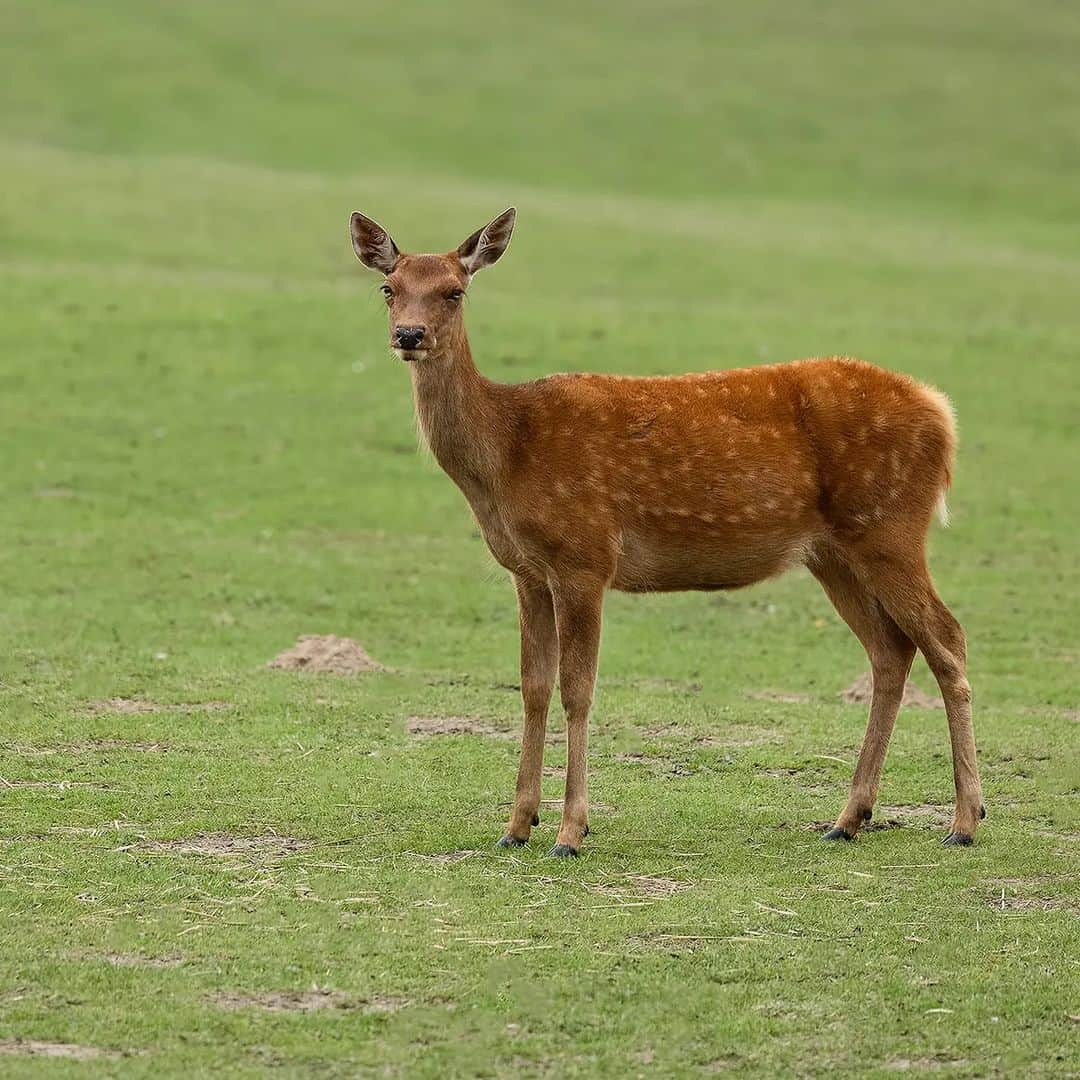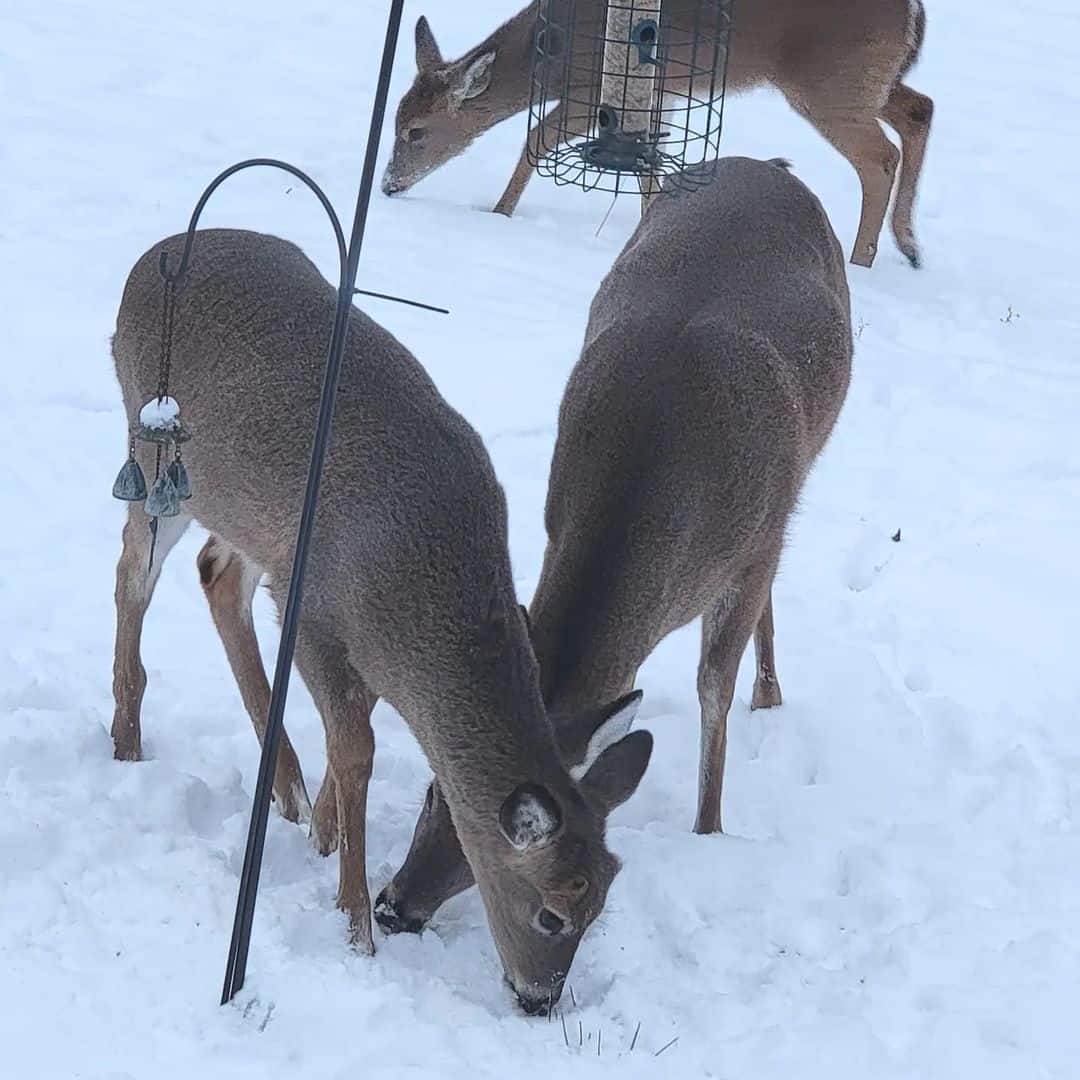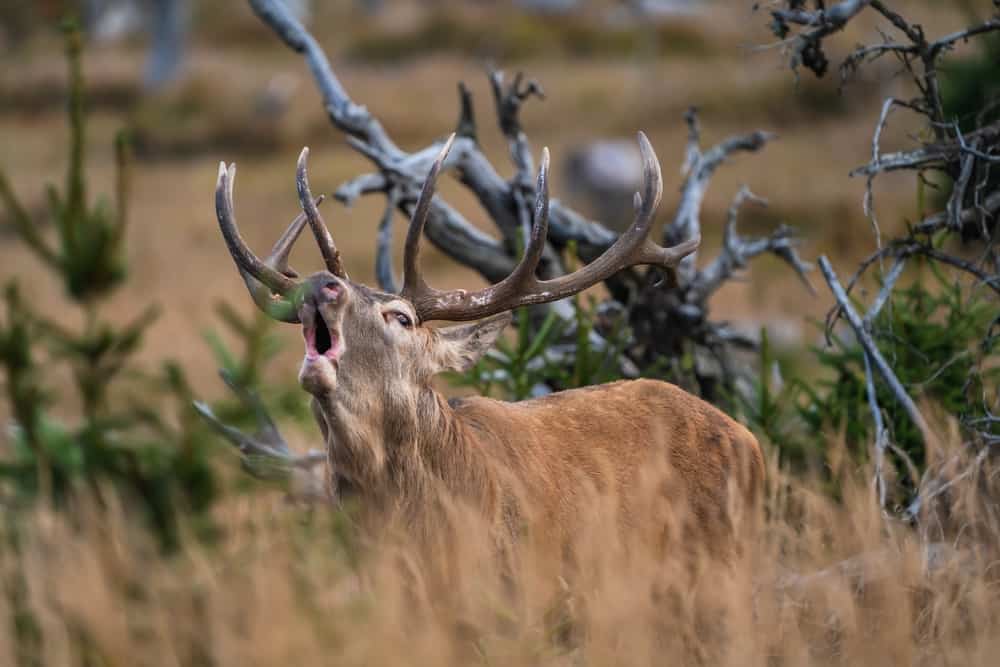Are you looking to attract deer when hunting? Or do you want to keep deer out of your garden? No matter the reason, learning about deer sounds is useful and fun.
Deer maneuver through woods like ghosts and normally don’t make any sound. Because they are prey, they avoid making noises that can attract predators and risk the safety of their herds.
However, these fascinating animals produce unique noises with different meanings. For instance, deer stomp on the ground to alert others of danger or produce snorting noises when angry.
Understanding the distinct sounds made by deer can help make you an effective hunter. You will also learn to appreciate these animals’ behavior and communicate with them effectively.
Here, we will explore the distinct sounds that deer make, when and why they make these noises, and how to recognize and respond to them.
Common Sounds Deer Make in The Woods
As stated above, deer make various sounds – each sound has a unique meaning. The most common sounds made by deer include:

1. Sniffing
Research shows that deer have an enhanced sense of smell, like dogs. Their sense of smell is at least 500 to 1,000 times sharper than a human’s. In fact, the whitetail deer has thousands of sensitive receptors in their nostrils. As a result, they can distinguish up to six smells simultaneously.
Because of their heightened sense of smell, these animals can pick up a hunter’s or predator’s scent from a half-mile.
When deer make sniffing sounds, they are trying to sort out the smell of things around them. Sniffing allows them to detect danger they cannot see while alerting the rest of the herd.
While deer sniffs don’t sound different from a human sniff, they are deeper and more powerful.
2. Stomping
Besides sniffing, deer might lightly stomp their hooves against the ground. The deer will stand straight, bend its front foot under itself and snap it down. The hard hoof will produce a thud noise on the ground—like a wood block striking the ground.
Contrary to belief, stomping is not a deer’s way of showing aggression. It’s a warning to the rest about potential danger. It puts the other deer on alert so they can pinpoint the threat. Stomping also helps to lure intruders into showing themselves or intimidating them.
3. Snorting
The deer might also combine stomping with snorting. This is a sharp, high-pitched sound deer make when frightened or feel threatened. It’s a sign the animals have detected danger, such as a hunter or predator. And they are warning the rest of the herd.
Deer snorts sound like a human sneeze. And it’s typically followed by the animal bolting away. If you’re hunting, this is not a noise you want to hear.
What Sounds Do Bucks Make?
During the mating season, bucks (male deer) or stags chase after females in an estrous cycle to breed with them. This behavior is also known as the rut and often involves several distinct sounds produced by the bucks. The most common sounds include:
1. Grunting
Bucks usually use low-pitched, long grunts to communicate with other deer during the rutting season. But when a buck’s grunt is deep and short, it’s showing dominance over its territory.
A buck will make this sound when choosing a mate, and he will persist as he chases her. Female deer (doe) also find the grunt call attractive. The short grunts also help to intimidate other rivals and notify them of the presence of a dominant buck.
2. Roaring
Bucks or stags usually produce loud, deep, and prolonged roars during the rutting season. The buck roar attracts females and keeps competitors at bay.
Male deer make this sound to assert their dominance over other bucks and inform potential mates of their availability. Females, especially red deer, prefer deeper roars of large stags. The buck roar is also a way for male deer to size one another up before getting into a full-on physical fight.
3. Rattling
Unlike grunting and roaring, rattling is not one of the deer vocalizations. Bucks produce this sound when sparring. They clash their antlers together to make a rattling sound.
Before the rutting season, deer clang their antler to size each other. But during the rut, the fight becomes serious. They fight for females and to determine dominance.
The sound of antler clashing usually attracts the attention of other bucks looking to assert their dominance. Because of this, some hunters use antlers or special rattling devices to mimic the sound of males fighting to lure bucks to a specific area.
4. Snort-wheeze
As the name suggests, this sound combines a snort and a raspy wheeze. Bucks make this aggressive sound when rutting to advertise their presence to female deer around and intimidate rivals. These vocalizations also show frustration and anger.
This sound is sharp, explosive, and accompanied by a puff of air from the deer’s nostrils, which makes it distinctive and recognizable. Most times, this sound will send small, timid male deer running.
Some hunters combine snort-wheeze with rattling hunters to create an impression of a fight. Therefore, attracting the attention of nearby bucks.
What Sounds Do Does Make?
A doe can make several unique sounds to communicate with other dear and show fear, anger, boredom, or excitement. Here are some common sounds a doe makes:
1. Bleating
Deer bleats help herd members to communicate with ease. This sound is high-pitched and has a noticeable vibration as the noise goats make.
A doe bleat also helps fawns locate their mother, especially newly born fawns who are still getting used to their surroundings.
2. Grunting
Unlike a buck grunt, a doe grunt is a bit high-pitched since female deer have smaller bodies, which translates into a shorter airway.
Female deer use this sound to communicate with one another and signal their presence. Also, a doe grunt warns other deer of danger and calls the fawns if the herd is moving.
3. Estrus Bleat
An estrus bleat is a type of bleating sound made by female deer to seduce dominant bucks during the breeding season. This vocalization is a higher and more intense version of the doe bleat and is used to signal their readiness to mate.
Sometimes, the estrus bleat is referred to as a tending call since it captures the attention of male deer around the area and sparks courtship behavior.
What Sounds Do Fawns Make?
Fawns (baby deer) are extremely vocal during the first few weeks of their life. That’s because they are still getting used to their surroundings and depend on their mothers.
Below, we have highlighted several distinctive sounds fawns make:
1. Bawling
When in distress or separated from their mother, fawns produce loud, high-pitched bawls. The vocalizations usually sound mournful and attract the attention of the mother doe.
Through bawling, fawns can reunite with their mothers. The intensity of the sound usually increases depending on how vulnerable the fawn feels.
The baby deer will make a low-pitched, rhythmic bawl when it’s lost or searching for the herd. But if it’s in immediate danger (being chased by a predator), the bawls could be loud. Bawling is sometimes known as a fawn distress call.
Occasionally, female deer make these sounds to find their offspring or even mate.
2. Whining
Aside from bawling, fawns whine when they want to nurse. The nursing whine is soft and high-pitched, like a human baby’s cry. It signals the mother doe that the baby wants to feed.
This sound is often heard when fawns are less than a few weeks and still depend on their mother for survival. It helps to create a strong bond between fawns and their mothers.
3. Bleating
A fawn bleat is much like a goat bleat. It’s a soft, nasal vocalization that helps fawns communicate with their mothers and signal their location. Because they are small-bodied, this sound has a higher pitch.
Fawns also make this sound when they are happy and socializing with their mother. Furthermore, it encourages social bonding with other members of the herd.
Other Dear Sounds You Should Know

1. Tending Grunt
Another deer sound worth noting is the tending grunt sound. Bucks make this low, guttural vocalization when chasing a doe during the breeding season. The sound encourages the female deer to stop so the buck can mate with her.
Tending grunt is a deeper version of the black grunt, often produced in a series like a rhythm. It’s common during pre-rut when the young male deer are trying to attract the attention of does before dominant bucks step in.
2. Screaming
Also known as a bleat-snort, male and female dear scream when in danger or injured.
It’s a powerful and disturbing vocalization that combines a bleat and a snort and is caused by a startling moment. For example, when a predator appears from nowhere or encounters an unexpected disturbance in its environment.
3. Buck Bawl
A buck bawl is a loud, high-pitched sound made by young male deer who are confused by the chaos of the mating season or when sparring with their fellow young bucks.
Buck bawls sound like a cow-calf bawl, but not as repetitive. It helps to draw the attention of does in the area and challenge the nearby bucks.
Closing Thoughts
Whether you’re a wildlife enthusiast or hunter, learning about deer calls can be useful. Deer make several sounds and noises, each with a unique meaning depending on the situations they find themselves in.
For example, the sounds can help deer communicate with one another, alert the herd of potential danger, attract female deer, and assert dominance.
The sounds above will help you understand the deer behaviors and enhance your appreciation of these fascinating animals. Furthermore, you will learn to communicate effectively.
Remember to take safety precautions into account when observing deer in their environment.
